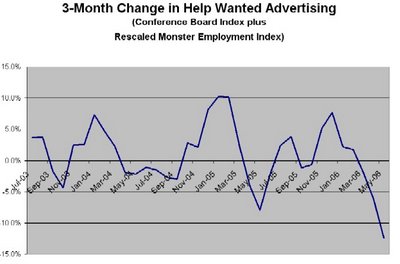Like most economists, I favor increased legal immigration to the US. I have to say, though, to my fellow immigration advocates: let’s get our story straight!
Immigration advocates typically make two assertions:
1) Immigrants do jobs that Americans aren’t willing to do, and
2) Immigration has little effect on wages
These statements cannot both be true. Consider what would happen if we got rid of all the immigrants. Somebody would have to do the jobs that the immigrants had been doing. Since, according to statement 1, Americans aren’t willing to do those jobs, we would have to raise the wages dramatically to get Americans to do them (which contradicts statement 2).
Theoretically, the way to get out of this contradiction is to assert that statement 1 is so thoroughly true that there are really no Americans who compete with immigrants in the labor market. If that’s the case, then, even though immigration affects the wages associated with jobs, it doesn’t necessarily affect the wages received by individuals. If we got rid of the immigrants, all the jobs with newly increased wages would be filled by people from other (presumably initially higher paying) jobs, so no individual would necessarily receive a large wage increase.
Logically, that works, but the premise is thoroughly implausible. I can believe that people who compete with immigrants are a small fraction of the population, but I cannot believe that they are an empty (or virtually empty) set.
Of course, you could say, since they’re a small fraction of the population, we don’t care about them. That, first of all, is not a very nice thing to say. But second of all, you have to recognize that, the smaller the fraction, the more dramatic is the harm done to them by immigration. If these immigrant-competers are actually a large fraction of the population, then statement 1 is false, so statement 2 can be true, and we don’t have to worry about them. On the other hand, if they’re a very tiny fraction of the population, then statement 1 is extremely true, which means that statement 2 is extremely false.
If I had to guess (given what I’ve heard about the research), I would say the truth is probably somewhere between statements 1 and 2. That is, there is a small but non-negligible fraction of the native population that is willing to do the jobs that immigrants do (or jobs that functionally substitute for those jobs), and the wages of this fraction are affected significantly but not overwhelmingly by immigration. I have always gone along with the argument that, since immigration helps the immigrants a lot more than it hurts these Americans, it’s still a good idea. Some people say I should be more concerned with my fellow citizens than with foreigners, and this leads to all sorts of contentious discussions about nationalism and the nature of democracy. Perhaps I’ll go into that stuff in another post.
Labels: economics, immigration, jobs, labor, politics, wages

